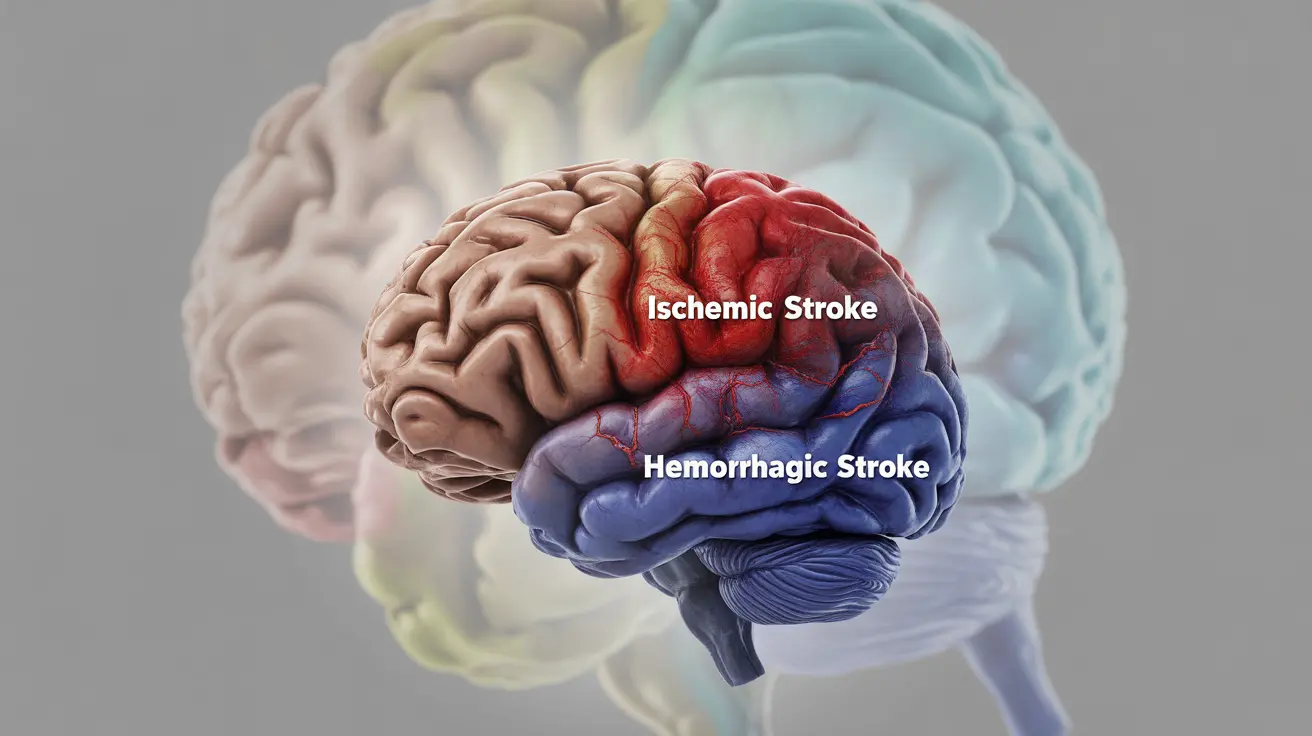Experiencing a stroke can significantly impact a person's life expectancy and overall health outcomes. For many survivors and their families, understanding the long-term outlook is crucial for planning care and making informed decisions about treatment options. This comprehensive guide explores life expectancy after stroke, including complications like post-stroke seizures, and the various factors that influence survival rates.
Understanding Stroke Types and Their Impact on Survival
The type of stroke a person experiences plays a crucial role in determining their long-term prognosis. There are two main categories: ischemic strokes, caused by blood clots, and hemorrhagic strokes, caused by bleeding in the brain. Each type carries different survival rates and recovery prospects.
Ischemic Stroke Prognosis
Ischemic strokes, which account for approximately 87% of all strokes, generally have a better prognosis than hemorrhagic strokes. The five-year survival rate for ischemic stroke survivors is typically higher, particularly when prompt treatment is received and proper rehabilitation protocols are followed.
Hemorrhagic Stroke Prognosis
Hemorrhagic strokes, while less common, often have more severe immediate outcomes and may result in lower survival rates. However, those who survive the initial event and receive appropriate care can still achieve meaningful recovery.
Key Factors Affecting Post-Stroke Life Expectancy
Several critical factors influence a stroke survivor's life expectancy:
- Age at the time of stroke
- Overall health status before the stroke
- Severity and location of brain damage
- Speed of emergency treatment
- Quality of post-stroke care
- Presence of other medical conditions
- Lifestyle modifications after stroke
Impact of Age on Stroke Recovery
Age significantly affects both stroke recovery and life expectancy. Younger stroke survivors typically have better outcomes due to greater brain plasticity and fewer pre-existing health conditions. However, older adults can still achieve meaningful recovery with appropriate medical care and rehabilitation support.
Post-Stroke Seizures and Their Effect on Prognosis
Post-stroke seizures represent a significant complication that can impact life expectancy. These seizures typically fall into two categories:
Early Seizures
Occurring within the first week after stroke, early seizures may indicate increased stroke severity but don't necessarily predict long-term seizure risk.
Late Seizures
Developing after the first week, late seizures may lead to post-stroke epilepsy and require ongoing management. Proper treatment of these seizures is crucial for maintaining quality of life and optimizing survival outcomes.
Improving Long-term Outcomes
Several strategies can help improve life expectancy after stroke:
- Adherence to prescribed medications
- Regular medical follow-up
- Participation in rehabilitation programs
- Management of risk factors
- Lifestyle modifications
- Prevention of recurrent strokes
Frequently Asked Questions
What is the average life expectancy after experiencing a stroke? The average life expectancy after stroke varies significantly based on individual factors, but studies show that approximately 50-70% of stroke survivors live beyond five years post-stroke with proper medical care and management.
How does life expectancy differ between ischemic stroke and hemorrhagic stroke survivors? Ischemic stroke survivors generally have better life expectancy rates compared to hemorrhagic stroke survivors. The one-year survival rate for ischemic stroke is approximately 80%, while hemorrhagic stroke survival rates are typically lower at around 60%.
What factors influence long-term survival and life expectancy after a stroke? Key factors include age, stroke severity, time to treatment, quality of medical care, presence of complications, underlying health conditions, and adherence to post-stroke care recommendations.
How does age affect the survival rate and life expectancy following a stroke? Younger stroke survivors typically have better survival rates and longer life expectancy due to fewer comorbidities and greater neuroplasticity. However, older adults can still achieve good outcomes with appropriate care.
Can seizures after a stroke impact life expectancy, and what information is available about this? Post-stroke seizures can affect life expectancy, particularly if they develop into epilepsy. However, with proper medication and management, many patients can effectively control seizures and maintain a good quality of life.




